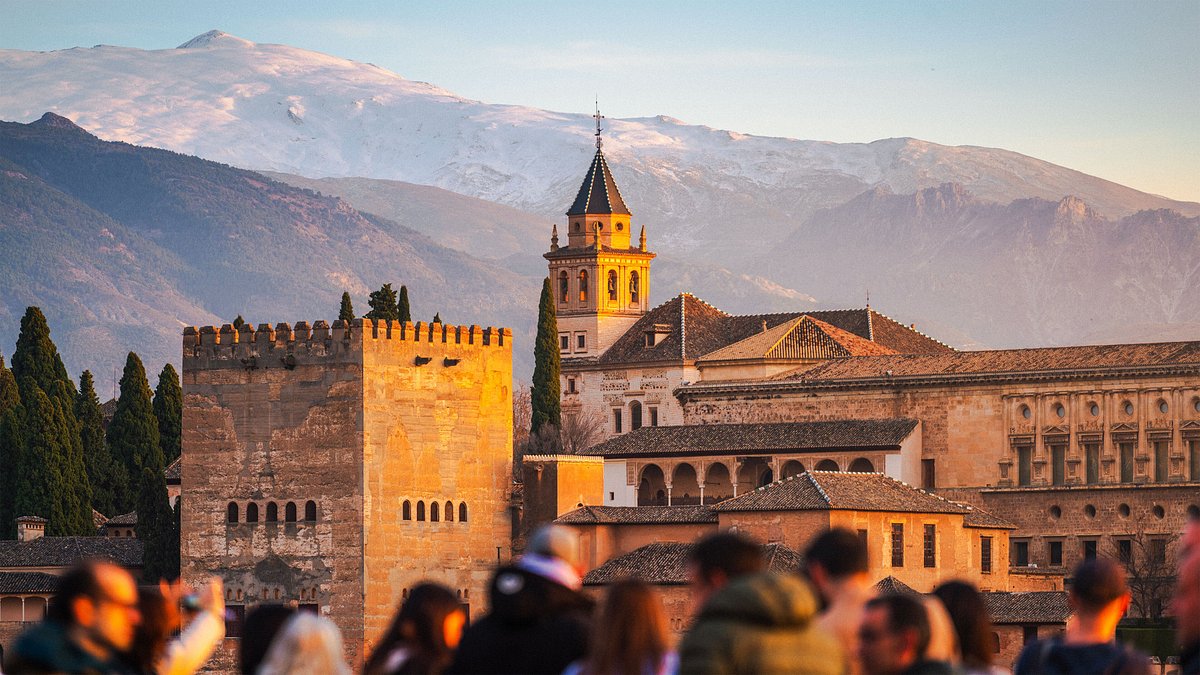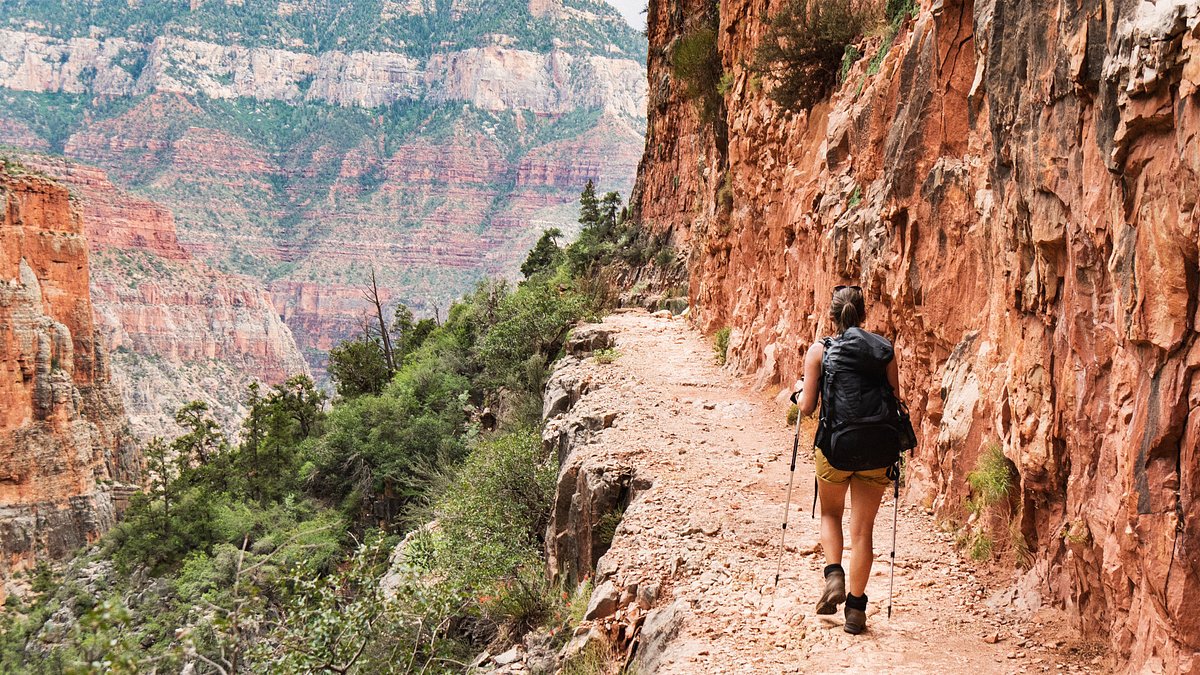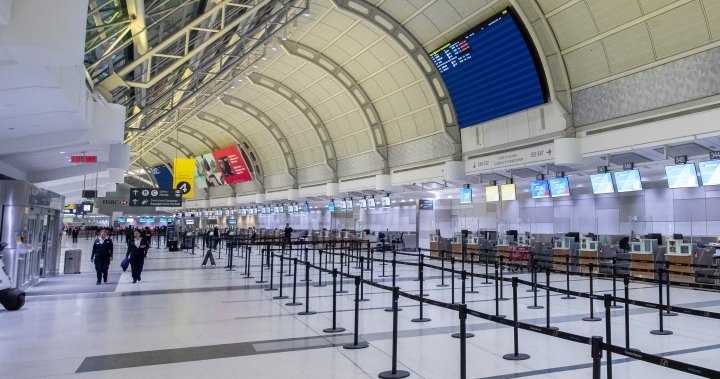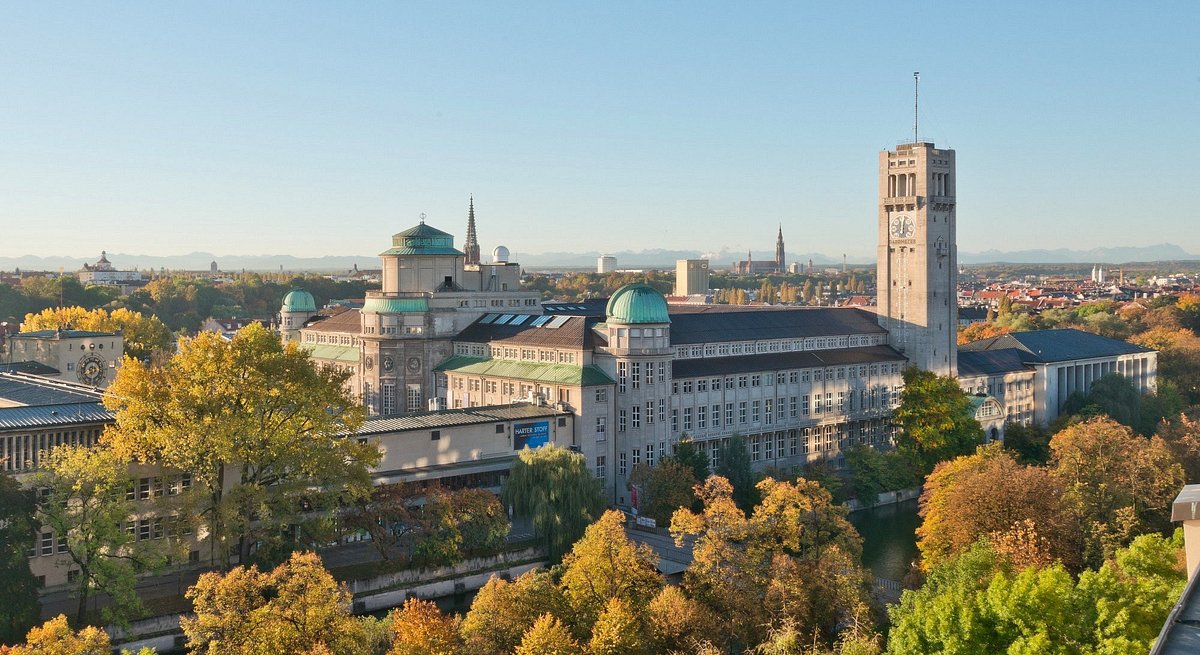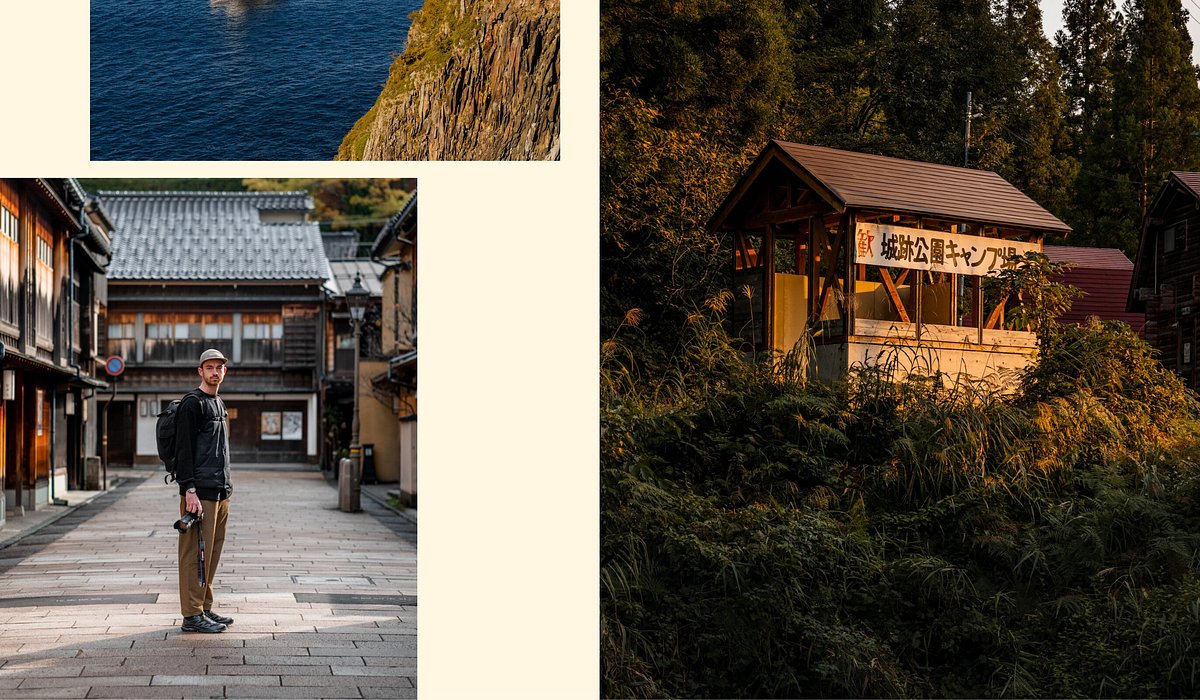You might be tempted to make a pitstop in Granada just to take in the Alhambra, the complex of palaces and gardens that has become one of Spain’s most popular attractions. But be warned: You’ll be sorry when you have to leave so soon. Two days is the bare minimum you’ll need for soaking up the beauty of this Andalusian city.
Most of Granada’s sights are easily reachable on foot, by public transportation, or on an electric bike, which means you can explore in your own way and at your own pace. We’ve included plenty of places you can stop along the way for a pastry or a plate of tapas. Our recommendations are based on the latest Tripadvisor ratings and reviews, so it’s like getting advice from a friend.
DAY ONE
MORNING: The unforgettable Alhambra
Perched on a cliff overlooking the city, the Alhambra dominates the landscape for miles around. It was the center of Islamic Spain beginning in the early 13th century. Named for its reddish walls (hamra means “red” in Arabic), it stands on the site of earlier fortifications constructed by Muslim rulers as far back as the 800s.
The complex covers 35 acres and can be as overwhelming as it is magnificent, so allow at least three hours to see it all, including the Alcazaba, Nasrid Palaces, and the Generalife Gardens. Note that you must buy a timed ticket in advance in order to visit, either on your own or through a local tour operator. Signage is minimal, so unless you’re an Islamic scholar, opt for a tour if you want to know what you’re looking at.
Choose the earliest available time slot of the day to avoid the crowds. Grab a coffee near your hotel before heading to the Pavilion Entrance by foot, taxi, or via local Bus 30 or 32. You can also visit the Nasrid Palaces in the early evening. Although only a portion of the complex is open after dark, the illuminated walls and courtyards evoke the magic of the Arabian Nights.
- Highly rated Yannat Tours offers Alhambra Private Tours that take in the entire complex, with knowledgeable guides who provide a personalized experience based on your interests, whether it’s Islamic history, court etiquette, or daily life. Skip-the-line entrance tickets are included.
- Nhue Concierge provides highly recommended Alhambra Small Group Tours (limited to 20 people) with personal headsets to make it easier to hear the running commentary. These tours sell out quickly, so book at least a month in advance during busy times of year.
- If you’d rather wander on your own, independent Audio Guide Tours from Viajes Alhambra include access to the Nasrid Palaces, Alcazaba, and Generalife Gardens.
Travelers say: “The Nasrid Palaces are a ‘must do’ here, featuring some of Spain’s best Islamic architecture along with exquisite glazed wall tiles, beautifully carved doors, and fountained courtyards.” —@top-trippers
AFTERNOON: Jumping ahead a few centuries
A steep downhill walk or brief bus ride from the Alhambra brings you to the center of town. Your first priority will be to fuel up, either with coffee and a pastry at Oteiza Coffee, where Tripadvisor readers recommend the almond croissants, or a full-on lunch at Bongo or Papas Elvira. You can also queue up for delicious, bargain-priced seafood at the centrally located Los Diamantes.
Energy restored, make your way to the imposing Granada Cathedral. This Renaissance masterpiece, the second largest cathedral in Spain (after the one in Seville), was originally commissioned by Queen Isabella I but wasn’t completed until 181 years later. The main sanctuary combines Moorish, Gothic, and Spanish influences.
Next door, the Royal Chapel houses the remains of Queen Isabella and King Ferdinand, as well as a gallery of artwork related to the rulers. You can explore these sights on their own, or combine them with a visit to the nearby San Jeronimo Monastery.
The narrow streets surrounding the cathedral are filled with shops selling spices, jewelry, and clothing at all price points, ranging from tacky to treasures. Favorites of Tripadvisor readers include the Alcaiceria, a former silk market that is now home to dozens of vendors hawking inexpensive clothing and souvenirs; Galeria Alea, offering original work by local artists at reasonable prices; and La Alborea, where the wares include olive oils, local wines, pottery, and tiles.
EVENING: Fabulous flavors and good vibes
Granada is one of the last places in Spain where restaurants give you free tapas, or appetizers, with your drinks. And we’re not talking about peanuts—typical options include slices of cured ham, croquettes bursting with melted cheese, and savory albondigas (meatballs). Ducking into little bars like Cisco y Tierra 1920 (where you can sample the local vermouth), La Loca de Gandoca, and Bar Provincias, you might end up so full you decide to skip dinner.
Instead of a sit-down meal, foodies should consider the Tapas and Wine Tour hosted by the highly recommended Spain Food Sherpas. Over the course of three hours, you’ll visit several restaurants and enjoy food and wine pairings while you learn the gastronomic history of the region. If you’d rather stay seated, El Mercader is run by a husband-and-wife team who create traditional menus with a modern twist, lovingly paired with local wines. Reserve in advance if you don’t want to sit at the bar.
Worthy detours along the way
DAY TWO

MORNING: In the heights
The hill directly across from the Alhambra, on the north side of the Darro River, is home to two of the city’s oldest neighborhoods, Sacromonte and the Albayzin (“Falconers’ District”). Set aside plenty of time to explore them both.
It’s easy to get lost along the winding streets—at one point, we found ourselves on a track above the town, in the company of an old man leading a donkey. But don’t let that put you off, as the views are worth the effort. Several buses (routes 31, 32, and 34) connect the area with the Alhambra and downtown in a continuous loop.
Start your day near the top of Sacromonte at Mirador San Miguel Alto, which has the city’s single most astonishing view. Mirador means “lookout,” and this one encompasses the Alhambra, the whitewashed houses of the Albayzin, and the rugged mountains of the Sierra Nevada.
From here, head to the Museo Cuevas del Sacromonte (Cave Museum), a 10-minute climb up some steps set into the hillside. Traditional cave dwellings offer a glimpse into a culture believed to date back to the 16th century. Extensive signage in Spanish and English and artifacts like a traditional loom paint a vivid picture of life among the Romani people.
Next, a 20-minute walk (or a short ride on Bus 34) brings you to Sacromonte Abbey. Built in the 16th century, it is known as the cradle of Christianity in Granada. Services are held here on Sunday mornings.
AFTERNOON: Exploring the cobblestone streets
Head down to the Albayzin, where more than a dozen excellent lunch choices await you. Try local treats like pate sandwiches at the unpretentious Bar Aixa, choosing a table in the dining room or outside in a bustling square. More upscale options include El Trillo, Carmen Mirador de Aixa, or our personal favorite, Cafe Mirador de la Lona.
The Albayzin is made for wandering, rewarding visitors with small discoveries like the view of lush gardens through the gate of a traditional house. While the streets are narrow and twisting, you’ll never never be far from a cafe or bakery when you need a break.
End the afternoon at yet another plaza with an astounding view, arguably the most famous of them all: Mirador de San Nicolas. Known as the place in town to watch the sunset, you’ll find flamenco guitar players, souvenir sellers, and tourists rubbing shoulders in a party atmosphere as the light fades.
SACROMONTE AND ALBAYZIN TOUR OPTIONS
- Two-hour walking tours of Granada’s Hidden Treasures are favorites with Tripadvisor readers. Expect lots of steps and winding cobblestoned streets.
- Another adventurous option is an Albaycin and Sacromonte Electric Bike Tour. (There’s also a Segway option for those who would rather not pedal.) Tripadvisor readers love how the bikes help them navigate the steep roads.
- If sunset views are a priority, consider a Golden Hour Walking Tour covering several of the area’s scenic overlooks. Your guide will share the history of the region and help you snap Instagram-worthy photos along the way.
Travelers say: “The Albayzin is where the ‘real’ people—including Muslims, Jews, and the Romani of Sacromonte—lived, while royalty stayed in the Alhambra. It has a definite Arabic feel, and shows just how much the Muslims influenced this part of Europe.” —@tchrtravler
EVENING: Flamenco in a cave
Said to be the birthplace of flamenco (although some give that honor to Seville), Granada is the center of a thriving scene celebrating this passionate dance. The traditional way to experience flamenco is in a cave, packed shoulder to shoulder with other onlookers.
Many of these options include dinner. But if you prefer to eat before or after, check out the traditional Andalusian menu at Bodegas Castaneda, in the center of town. Unless you get here early, you may need to wait for a table or stand at the bar.
Worthy detours along the way
Know Before You Go
-
Although locals will insist that it’s a “dry heat,” summers are brutal in Granada, with average temperatures in the 90s. Winters can be cold for southern Spain, leaving fall and spring as the ideal times to visit. That said, our favorite months are January and February. Temps rarely fall below freezing and often rise as high as 60, and there’s less than a 20 percent chance of rain on any given day. Accommodations are heavily discounted, and there’s a refreshing lack of crowds.
-
Many museums and galleries are closed on Mondays. Some stores are closed on Sundays, although less so in areas favored by travelers.
-
Local shops open by 10 in the morning but may close between 2 and 4 for siesta, opening again between 4 and 8. Chain and department stores stay open all day, as do museums and most other attractions. Official mealtimes are on the late side: 2pm or later for lunch, 8pm until midnight for dinner.
-
By bike: Electric bikes with fat tires are the best way to traverse the city’s steep hills and cobblestoned streets, while mountain and road bikes are great for exploring the surrounding countryside. You can rent them all at Bicicletas la Estacion. Rent in advance, and they’ll even deliver your bike to your hotel.
By car: Driving in Granada is not for the faint of heart, especially as you head into the hilly neighborhoods of Sacromonte and the Albaycin. Most visitors leave their vehicles at their hotels or the Alhambra Car Park.
By taxi: Taxis are plentiful and can be hailed on the street. You’ll also find them lined up at the train station and near major hotels, the Alhambra, and Plaza Nueva. A green light on the roof means the taxi is free. Uber is available, but not Lyft.
Airport transfers: The Granada Airport Bus departs 30 minutes after each flight lands and takes about 45 minutes to reach downtown. A taxi or car service such as SunTravel takes about half as long.
